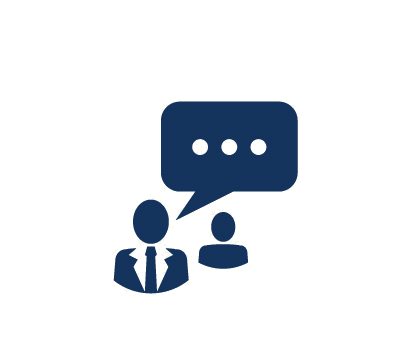Duration: 5 Days
TCP/IP is the globally accepted group of protocols at the core of the Internet
and organizational intranets. A solid understanding of each of these protocols
and how they work will give you the ability to deploy the most effective network
for your organization. In this course, you will gain the essential knowledge and
skills required to set up, configure, support, and troubleshoot your
TCP/IP-based network.
Our expert instructors and extensive hands-on labs will prepare you to face
and overcome the challenges of today's complex networks. This course-the longest
running of its kind in the industry-also prepares you for more specialized
courses in network security, wireless integration, and Voice over IP, as well as
for product-specific training such as Cisco, Avaya, and Microsoft.
What You Will Learn
- The essential elements of the TCP/IP protocol suite
- Install and configure TCP/IP in a live classroom network
- The roles of various devices in a TCP/IP network
- IP addressing and subnetting including Variable Length Subnet Masking (VLSM)
- Subnet an IP network and implement the resulting addresses
- Details of ARP, IP, ICMP, TCP, and UDP - their functions and relationships
- Automate address assignment and name resolution using DHCP and DDNS
- IP routing and the protocols that support it, such as RIP and OSPF
- How applications like FTP, HTTP, Telnet, and others work in a TCP/IP
network
- Functions of IPv6 and its related protocols
- Functions and capabilities of multicasting, Voice over IP, and e-mail
- Use of a protocol analyzer to isolate and troubleshoot network problems
- Troubleshoot problems at each layer of a TCP/IP network
Audience
Anyone who is responsible for designing, installing, configuring, and
maintaining TCP/IP networks or who needs to understand TCP/IP protocol
structures and functions will benefit from this course. This course also
provides excellent preparation for more advanced networking training.
Prerequistes
Course Outline
1. History and Standards
-
Origin of TCP/IP
-
ARPANET Requirement Documents
-
Collaborative Network Requirements
-
One Protocol?
-
Peer-to-Peer Protocols: Actual Flow
-
Peer-to-Peer Protocols: Effective Flow
-
Documentation and RFCs
-
RFC Categories
2. TCP/IP Numbering Systems
-
Data Representation
-
Numbering Systems
-
Number Grouping
-
Converting Binary or Hexadecimal to Decimal
-
Practice Converting Binary to Decimal
-
Converting Decimal to Binary or Hexadecimal
-
Example 1: Converting 1500 to Binary
-
Example 2: Converting 1500 to Hexadecimal
-
Decimal Conversions
-
Converting Hexadecimal to Binary and Binary to Hexadecimal
-
Counting
-
Guidelines for Determining Base
3. Local Signaling
-
Local Signaling
-
Ethernet Addressing
-
Unicast
-
Multicast
-
Broadcast
-
The Ethernet Header
-
Protocol Type
-
Size Limits
-
CSMA/CD
4. IP Addressing
-
A Logical Address
-
IP Address Structure
-
Dotted Decimal Notation
-
Classful Addressing (Class A, B, C, D, E)
-
Reserved Addresses
-
Masking
-
Comparing Addresses
-
Prefix Notation
-
Private Addressing
-
Network Address Translation
-
Address Assignment
-
One Flat Network
-
IP Address Blocks
5. IP Subnets
-
A Logical Address
-
Subnetting
-
Required Information
-
Multiple Subnets
-
Determining the Mask
-
The First Subnet
-
Laying out the Subnets and their Addresses
-
The Second Subnet
-
The Third Subnet
-
Planning for Growth
-
The Current Picture
-
Sequential Allocation Error
-
A Future Fourth Subnet
-
With The Fourth Subnet
-
Subnetting Subnets
6. Address Resolution Protocol
-
Address Mapping
-
ARP Cache
-
ARP Restrictions
-
ARP Message Fields
-
Hardware and Protocol Types
-
Hardware and Protocol Address Lengths
-
Operation
-
Addresses
-
Exception
-
LAN Fill
-
How Else Can ARP Help?
7. Multicasting
-
What is Multicasting?
-
Uses of Multicasting
-
Multicasting Overview
-
Some Reserved IP Multicast Addresses
-
" Multicast Groups and Internet Group Management Protocol (IGMP)
-
Multicast Groups
-
IGMP
-
IGMP Restrictions
-
Multicast Routing
-
Mapping a Class D IP Address to an Ethernet Multicast Address
-
How Does It All Work Together?
8. Internet Protocol
-
TCP/IP Protocols
-
Self-Healing Networking
-
IP Header
-
IP Header Layout
-
Type of Service Byte
-
Differentiated Services
-
Total IP Length
-
Datagram ID Number
-
Fragmentation
-
TTL
-
Protocol Field
-
IP Header Checksum
-
IP Address
-
IP Option Fields
-
IP Sample Data Exchanges
9. IP Routing
-
TCP/IP Protocol
-
Routing Function
-
The IP Routing Algorithm
-
The Routing Table
-
Routing Table Basics
-
Automatic Table Maintenance
-
Exterior or Interior Protocol
-
Interior Gateway
-
Exterior Gateway
-
Routing Information Protocol
-
RIP Routing Information Basics
-
RIP Route Loops
-
OSPF vs. RIP 1 vs. RIP 2
-
Layer 3 Switching
10. Simple Sessions with User Datagram Protocol
-
TCP/IP Protocols
-
Host-to-Host Layer Categories
-
Connectionless Protocol
-
Connection-Oriented Protocol
-
Low Overhead vs. Reliability
-
UDP Header
-
Port Basics
-
UDP Ports and Sockets
-
Applications
-
UDP Sample Data Exchanges
11. Robust Sessions with TCP
-
TCP/IP Protocols
-
Reliable Transport Services
-
Introduction to TCP
-
TCP Headers
-
TCP Source and Target Ports
-
Source Sequence Number
-
Acknowledgment Sequence Number
-
TCP Header Length
-
Session Bit Flags
-
Flagging a Session
-
Sender Window Size
-
TCP Checksum
-
Urgent Data Size
-
Option Fields
-
Maximum Segment and Window Size
-
TCP Three-Step Handshake
-
Congestion and TCP
-
Primary Cause
-
Secondary Cause
-
Four Step Session Shutdown
-
TCP Sample Session
12. Autoconfiguration
-
BootP and DHCP
-
Manual vs. Automatic Address Assignment
-
DHCP New Lease Acquisition Process
-
DHCP Discover
-
DHCP Offer
-
DHCP Request
-
DHCP Acknowledgment
-
DHCP Scopes and Options
-
DHCP in a Routed Network
-
Troubleshooting
-
The ipconfig /release Command
-
The ipconfig /renew Command
-
Multiple DHCP Servers
13. DNS: Names Instead of Numbers
-
DNS Overview
-
A Distributed Service
-
The DNS Tree
-
Generic Top-Level Domains
- Sponsored Top-Level Domains
-
Name Server
-
Primary and Secondary Servers
-
DNS Database
-
Resource Records
-
The Name Resolution Process
-
Name Query Packet
-
Name Query Response Packet
-
Reversing the Process
-
Name and Number Organizations
-
Dynamic DNS
-
Troubleshooting
14. Diagnostics and Error Reports via ICMP
-
ICMP Overview
-
Course Labs
Lab 1: Numbering Systems
-
Decimal Equivalents for Binary Sequences
-
Converting Binary Numbers to Decimal
-
Converting Decimal Numbers to Binary
-
Converting Hexadecimal Numbers to Decimal
-
Converting Decimal Numbers to Hexadecimal
Lab 2: Lab Setup and Ethernet Header Analysis
-
Preparing to Begin Installation
-
Modifying Your System Configuration
-
Ethernet Header Analysis
Lab 3: IP Addressing and Subnetting
-
Essential IP Addressing and Subnetting
-
Fixed Length Subnet Masking
-
Variable Length Subnet Masking
Lab 4: Address Resolution Protocol
-
Viewing Your ARP Cache
-
Manually Changing ARP Cache Entries
Lab 5: Multicasting
-
Capturing Various Multicast Frames
-
Recording RIPv2 Multicast Addressing Information
-
Recording 802.1 Multicast Addressing Information
-
Recording Protocol Independent Multicast Addressing Information
-
Recording IGMP Multicast Addressing Information
Lab 6: Troubleshooting the Network Access Layer
-
Learning About Your Network Interface Layer Troubleshooting Tools
Lab 7: IP Processes
-
Capturing and Analyzing an IP Datagram
-
Manipulating the Time to Live
-
The Fragmented IP Datagram
-
Review of Important IP Protocol Information
Lab 8: Routing
-
Routing Begins at Home
-
Tracing the Route to Different Destinations
-
Viewing the Routing Table on the Cisco 1760 Router
-
Viewing the Routing Table on the Juniper J2300 Router
-
Viewing Routing Updates Using the Protocol Analyzer
Lab 9: Troubleshooting the Internetwork Layer
-
The First Steps
-
Changing Your Default Gateway
-
Pinging a Local Workstation
-
Pinging Server1
-
Correcting the Default Gateway Entry
-
Testing the Routing Process
Lab 10: UDP Transactions
- Creating UDP Traffic
-
Creating Other UDP Traffic
Lab 11: TCP Processes
-
Opening Wireshark and Setting a TCP filter
-
Beginning a TCP Transaction
-
Identifying the Three-Step Handshake
-
Answering General TCP Knowledge Questions
Lab 12: Troubleshooting the Host-to-Host Layer
-
Preparing to Troubleshoot the Host-to-Host Layer 1
-
Verifying the Operation of a UDP Application
-
Determining the Cause of Error
-
Preparing to Verify the Operation of a TCP-Based Application
-
Starting a TCP Application
-
Determining the Error
Lab 13: DHCP Process
-
Preparing to Examine the DHCP Process
-
Changing Your Configuration to Use DHCP to Obtain an IP Address
-
Determining Your Assigned DHCP Address
-
Releasing Your Assigned Address
-
Viewing the DHCP Discover Packet
-
Viewing the DHCP Offer Packet
-
Viewing the DHCP Request Packet
-
Viewing the DHCP ACK Packet
-
Reviewing a Release Packet
Lab 14: Domain Name System (DNS)
-
Preparing to Examine the DNS Process
-
Creating a DNS Query
-
Viewing Your DNS Request
-
Viewing Your DNS Response
-
Viewing a Zone Transfer
-
Viewing the Zone Transfer Using Wireshark
-
Performing the Zone Transfer Process
Lab 15: ICMP Messaging
-
Preparing to Examine ICMP Messages
-
Using Ping: Echo Request and Echo Response
-
Performing Longer Pings
-
Considering ICMP Variation Reports: Fragmentation
-
Considering ICMP Variation Reports: Port Unreachable
-
Considering ICMP Variation Reports: Destination Net Unreachable
-
Considering ICMP Variation Reports: Time to Live Failure
-
Explaining the Formatted Packet Dump
Lab 16: TCP Applications
-
Telnet
-
Preparing to View a Telnet Session
-
Starting a Telnet Session
-
Viewing a Telnet Session
-
FTP
-
Preparing to Analyze an FTP Session
-
Completing an FTP Session
-
Viewing the Captured FTP Session
-
HTTP
-
Preparing to Analyze an HTTP Session
-
Completing an HTTP Session
-
Viewing the HTTP Session
-
Viewing a Small File Being Displayed
-
Viewing a Large File Being Displayed
-
Viewing a Large File Being Downloaded
-
Cleaning Up
Lab 17: UDP Applications
-
Preparing to View a TFTP Session
-
Creating a TFTP Session
-
Viewing the TFTP Session
-
Preparing for the UDP Multicast Demonstration
-
Starting Your Multicast Application
-
Viewing the Captured UDP Multicast Information
-
Cleaning Up
Lab 18: Voice over IP
-
Preparing for Voice over IP
-
Placing a Call
-
Watching the Call Process
Lab 19: Internet Protocol version 6 (IPv6)
-
Configuring Your Workstation for IPv6
-
Verifying Your IPv6 Configuration
-
Using netsh to Manage IPv6
-
Using Ping for IPv6
-
Using nslookup and IPv6
-
Removing IPv6
Lab 20: Troubleshooting the Classroom Network
-
Solving the Classroom Network Problem


